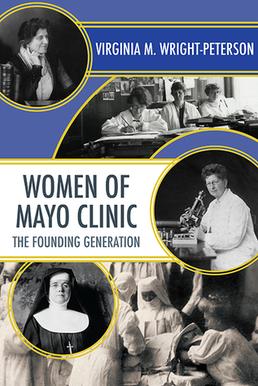Women of Mayo Clinic
Women of Mayo Clinic refers to the pioneering female medical professionals and staff who have contributed significantly to the growth, reputation, and operations of the Mayo Clinic, a nonprofit American academic medical center focused on integrated clinical practice, education, and research. The Mayo Clinic, founded in the late 19th century, has been at the forefront of medical innovation and patient care, with women playing crucial roles in its development and success.
Early Contributions[edit | edit source]
The history of women at the Mayo Clinic dates back to its inception. Dr. Edith Graham Mayo, one of the first women associated with the clinic, was instrumental in its early days, not only as the wife of Dr. William Worrall Mayo, the founder, but also as a nurse and administrator. She set a precedent for female involvement in the clinic's operations, emphasizing the importance of nursing and patient care.
In 1915, the Mayo Clinic established the Mayo Clinic School of Nursing, further solidifying the role of women in the institution. This initiative provided training and education for nurses, many of whom would go on to serve at the Mayo Clinic, contributing to its reputation for excellence in patient care.
Pioneering Female Physicians[edit | edit source]
The Mayo Clinic has been home to several pioneering female physicians who have made significant contributions to their fields. One notable figure is Dr. Louise Carpenter Gloeckner, one of the first female physicians at the clinic. Her work in pathology and her leadership in medical education paved the way for future generations of women in medicine.
Another prominent figure is Dr. Barbara Woodward Lips, a consultant in the Department of Diagnostic Radiology. Dr. Lips made significant contributions to the field of radiology and was known for her dedication to patient care and medical education.
Leadership and Innovation[edit | edit source]
Women have also held significant leadership positions at the Mayo Clinic, contributing to its growth and innovation. For example, Dr. Shirley Weis, who served as the Chief Administrative Officer, played a key role in strategic planning and operations, helping to expand the Mayo Clinic's services and reach.
In recent years, the Mayo Clinic has continued to support and promote women in medicine through various initiatives and programs aimed at fostering diversity, equity, and inclusion. This includes leadership development programs, mentorship opportunities, and research grants specifically targeted at supporting women in the medical profession.
Current Contributions[edit | edit source]
Today, women at the Mayo Clinic continue to make significant contributions across all areas of the institution, from clinical care and research to education and administration. They are involved in groundbreaking research, innovative patient care practices, and the education of the next generation of healthcare professionals.
Conclusion[edit | edit source]
The women of the Mayo Clinic have played and continue to play a vital role in the institution's success and reputation as a leader in medical care, research, and education. Their contributions, leadership, and innovation have not only benefited the Mayo Clinic but have also made significant impacts on the broader medical community and patient care worldwide.
Search WikiMD
Ad.Tired of being Overweight? Try W8MD's physician weight loss program.
Semaglutide (Ozempic / Wegovy and Tirzepatide (Mounjaro / Zepbound) available.
Advertise on WikiMD
|
WikiMD's Wellness Encyclopedia |
| Let Food Be Thy Medicine Medicine Thy Food - Hippocrates |
Translate this page: - East Asian
中文,
日本,
한국어,
South Asian
हिन्दी,
தமிழ்,
తెలుగు,
Urdu,
ಕನ್ನಡ,
Southeast Asian
Indonesian,
Vietnamese,
Thai,
မြန်မာဘာသာ,
বাংলা
European
español,
Deutsch,
français,
Greek,
português do Brasil,
polski,
română,
русский,
Nederlands,
norsk,
svenska,
suomi,
Italian
Middle Eastern & African
عربى,
Turkish,
Persian,
Hebrew,
Afrikaans,
isiZulu,
Kiswahili,
Other
Bulgarian,
Hungarian,
Czech,
Swedish,
മലയാളം,
मराठी,
ਪੰਜਾਬੀ,
ગુજરાતી,
Portuguese,
Ukrainian
Medical Disclaimer: WikiMD is not a substitute for professional medical advice. The information on WikiMD is provided as an information resource only, may be incorrect, outdated or misleading, and is not to be used or relied on for any diagnostic or treatment purposes. Please consult your health care provider before making any healthcare decisions or for guidance about a specific medical condition. WikiMD expressly disclaims responsibility, and shall have no liability, for any damages, loss, injury, or liability whatsoever suffered as a result of your reliance on the information contained in this site. By visiting this site you agree to the foregoing terms and conditions, which may from time to time be changed or supplemented by WikiMD. If you do not agree to the foregoing terms and conditions, you should not enter or use this site. See full disclaimer.
Credits:Most images are courtesy of Wikimedia commons, and templates Wikipedia, licensed under CC BY SA or similar.
Contributors: Prab R. Tumpati, MD

